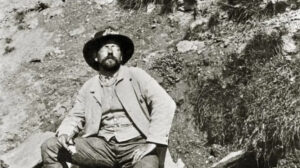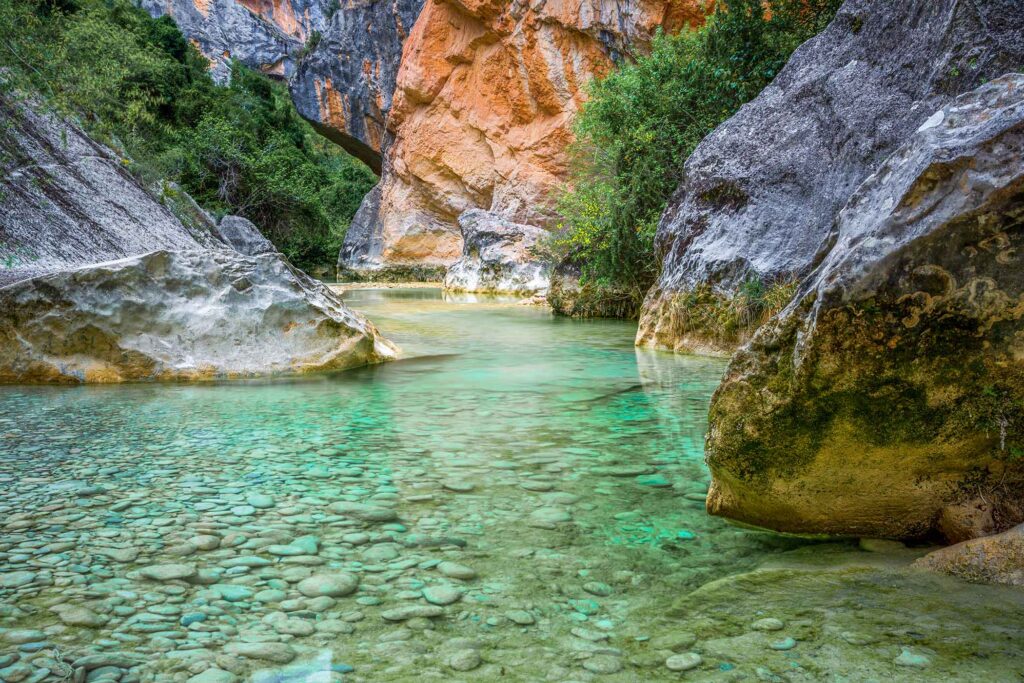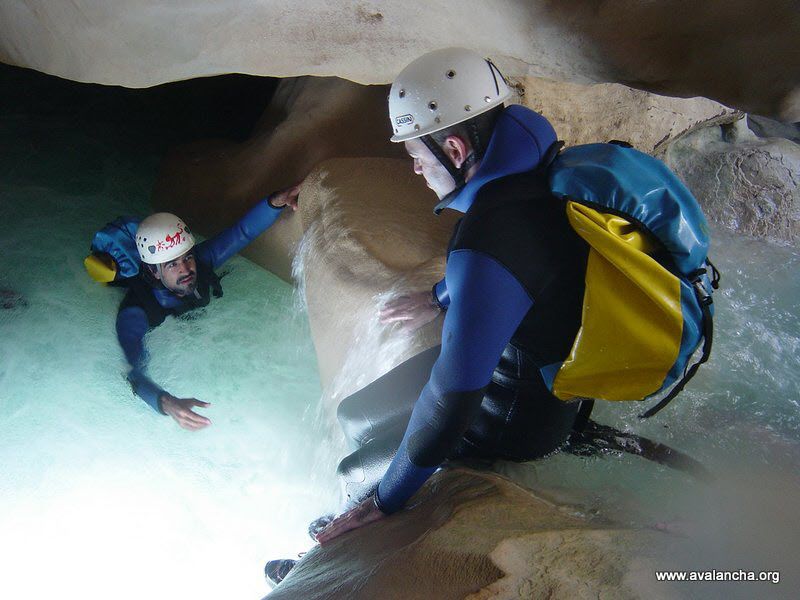Canyoning is a relatively recent leisure and sports activity as we know it today. It was not until the late 80s and early 90s that canyoning began to acquire its own entity, with the emergence of specific techniques and materials of this discipline, which began to separate it from what is considered its big sister: caving.
In fact, as we will see below, it was the speleologists who began to systematically enter gorges and canyons. Even today, both activities still have many things in common.
The origins of canyoning
Although since prehistoric times hunters already went into deep and narrow gorges in search of or in pursuit of their prey, and shepherds went up dry riverbeds in search of shelter for livestock, it is not possible to define them as canyoners as we understand the term today.
The “official” birth of canyoning dates back to 1904, and is attributed to Lucien Briet, the great discoverer of a large number of ravines in the Pyrenees mountains, and especially in the Sierra de Guara.

Caving and canyoning
Caving and canyoning were born almost hand in hand.
Caving took its first steps when Édouard-Alfred Martel and other colleagues entered an underground river, in the French Languedoc-Roussillon, near Camprieu. They traveled underground about 1,300 meters for 2 days, overcoming a large number of difficulties and dangers. This happened in 1888, and in 1895 Martel himself founded the Society of Speleology.
A year later, in 1896, Lucien Briet joined the newly founded society, and together with Martel and Louis Armand began different explorations through canyons and chasms. But while Martel and Armand focused on underground cavities, Briet opted for the search for ravines. Between 1903 and 1911, Lucien Briet carried out invaluable exploratory work, compiling a large number of data in the Pyrenees and, particularly, in the Sierra de Guara.
The first “modern” canyoning routes
In 1933, a French group made up of Cazalet, Duboscp, Mailly and Ollivier descended the Oladibia canyon, located in the French Basque Country. This descent is considered to be the first modern canyoning route, being perfectly documented.
During the 60s another French group began to make descents through the Sierra de Guara, in Choca, Mascún and Guero, with the invaluable help of the work that Lucien Briet had done decades earlier.
Already in the 70s, canyoners such as Escribano and Santolaria would take over.
Finally, in the 80s and 90s the sport began to become popular, opening canyons and ravines for everyone.
What is canyoning?
Canyoning is an adventure activity that consists of descending ravines, canyons and gorges, using different techniques such as rappelling, jumping and natural slides. Although its roots can be traced back to the exploration practices of speleologists, modern canyoning began to differentiate itself in the late 1980s, when specific techniques were developed for this discipline. It is characterized by combining the adrenaline of extreme sports with the possibility of enjoying nature in unique environments that are difficult to access.
Canyoning sport
Canyoning has evolved from a recreational activity to an adventure sport practiced all over the world. During the 80s and 90s, canyoning sport gained popularity, especially in places such as the Sierra de Guara, where pioneers established the first modern routes. This sport combines climbing and swimming techniques, adapted to the particularities of canyons and rivers, making it a demanding but accessible activity for different levels of experience. In Avalancha we can guide you through its ravines, book your experience:




